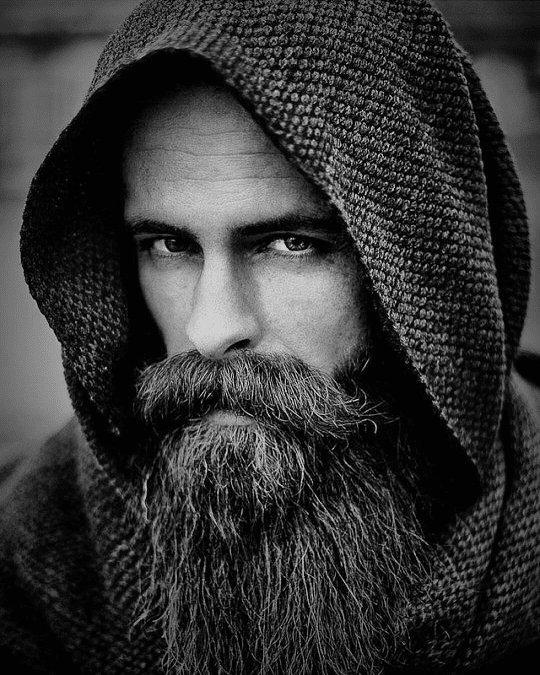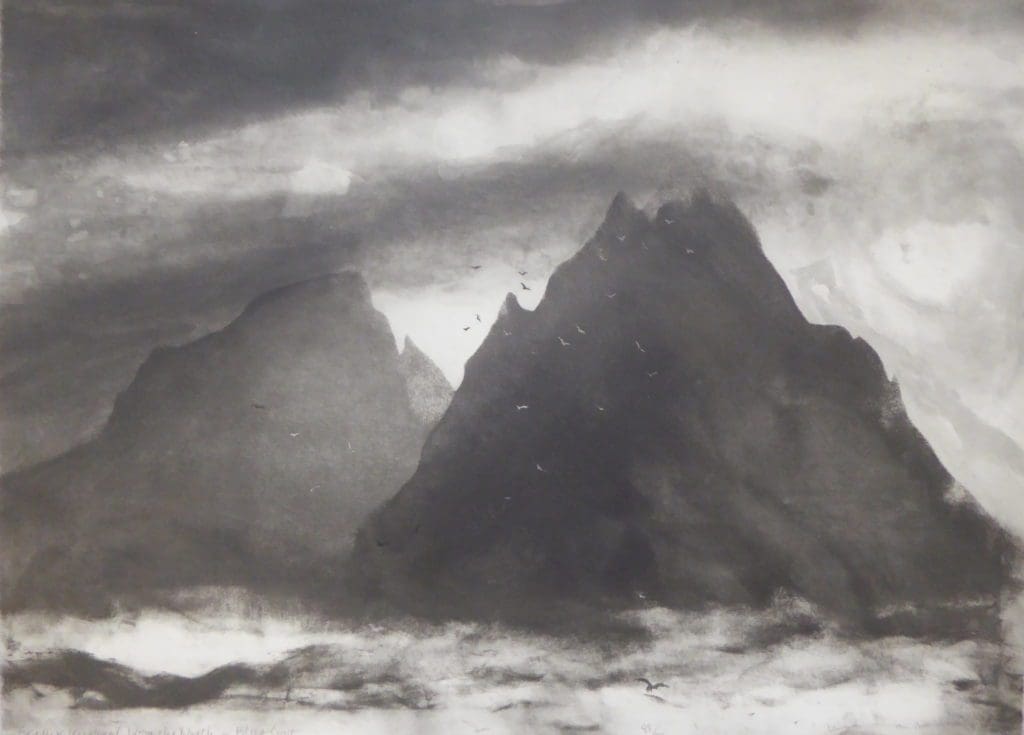A blog for Catholic men that seeks to encourage virtue, the pursuit of holiness and the art of true masculinity.
How Irish Monks Saved the World (From the Dark Side)

Modern historian and commentator Kenneth Clark said in his popular BBC show Civilization, “Western Christianity survived by clinging to places like Skellig Michael, a pinnacle of rock [seven] miles from the Irish coast, rising seven hundred feet out of the sea.” It’s an intriguing claim, crediting the solitary monastery on Skellig Michael with a role in the survival of Western Christianity.
Author Thomas Cahill broadens the connection to not only include Western Christianity, but “civilization” in his book “How the Irish Saved Civilization: The Untold Story of Ireland’s Heroic Role from the Fall of Rome to the Rise of Medieval Europe.”
How is it possible that a small monastic community at the edge of the world could have such a large impact in world affairs?
Over a thousand years ago there lived a group of warrior-monks on an island seven miles off the coast of Ireland called “Skellig Michael” (an island recently made famous by Star Wars: The Last Jedi). They were almost entirely cut off from the world and were (voluntarily) stranded on an island that was relatively small and treacherous to live on.
It was a difficult life, but one they believed would bear much fruit.
Green Martyrdom
Along with a desire to go into the “desert” and contemplate God, the monks of Ireland held on to the concept of a “green martyrdom.” The Catholic Church has always taught about the possibility of a “red martyrdom,” where one imitates Jesus’ sacrifice on the cross by dying for the sake of the Gospel. Additionally, there was the belief that if a person wasn’t called to a red martyrdom, they could participate in the same sacrifice with a “white martyrdom,” where someone might endure ridicule for belief in the Gospel, but not suffer death.

Early on, especially in Ireland, there developed a third martyrdom called a, “green martyrdom.” An ancient Irish homily, written around the end of the seventh century, gives a perfect summary of this type of martyrdom.
“Now there are three kinds of martyrdom, which are accounted as a cross to a man, to wit: white martyrdom, green and red martyrdom. White martyrdom consists in a man’s abandoning everything he loves for God’s sake, though he suffer fasting or labor thereat. Green martyrdom consists in this, that by means of fasting and labor he frees himself from his evil desires, or suffers toil in penance and repentance.”
The Irish took hold of this type of martyrdom and, not surprisingly, sought out remote “green” places to live out this green martyrdom. They wanted to be as severe as they could in fasting and penance, and so they preferred the harshest and remote places possible.
Spiritual Warriors
The monks journeyed to Skellig Michael with full knowledge that for the rest of their lives, they would be battling against the “Dark Side” of this world. They knew it would not be an easy fight and freely chose a life of self-denial, so they could defeat the power of Satan and clear the path to Eternal Life.
These monks saw themselves as great spiritual warriors engaged in an epic battle against Satan and so they named the island (and church on it) after St. Michael the Archangel, the commander of the heavenly armies.
Preservation of Culture
Besides leading a life of prayer and self-denial, the monks on this remote island sought to preserve culture at a time when Europe was in chaos. The barbarian tribes had won the day and the glories of Rome ceased to exist. These new leaders were not fond of Roman ways and sought to destroy anything associated the classical world.
The classical way of education in particular was almost obliterated and those in Western Europe were more concerned about survival than enriching a flourishing culture.
Except in Ireland.
The Irish monks were masters of Latin and Greek culture and maintained it through the copying of manuscripts and the passing on of knowledge in various monastic schools throughout Ireland.
It is in this context that the monastery at Skellig Michael was born, a “Golden Age” of Irish monasticism, where faith and culture was preserved for generations to come.
How can we fight?
What can we do to fight back against our own “dark age”? The monks on Skellig Michael point us in the right direction. We must discover ways in our own lives to practice self-denial, pray “without ceasing,” and wield the “sword of the spirit” boldly. We must find our own “green martyrdom,” and seek it out for the benefit of our eternal soul and the world around us.
We must also seek to preserve Christian culture, recognizing what is true, good and beautiful, creating beautiful stories that remind us of our eternal destiny of Heaven.
This is one of the reasons why I, on a personal level, have embarked on my own journey of preserving the story and legends of these ancient monks and have chosen to communicate that in a new comic book entitled, Finnian and the Seven Mountains. They led inspiring lives and with this comic book series their story has a potential to reach new audiences, especially young people who are fascinated by comic books, graphic novels and superheroes, giving them a positive story the embraces the traditions of the past and teaches them to seek God’s will above all tings.
The spiritual legacy of the monks of Skellig Michael endures to this day. Let us take it up and continue it, going to the source of their strength, so that we might be able to inspire others by being a light, a city set on a skellig (mountain) for all to see.
Download a FREE preview of “Finnian and the Seven Mountains” by visiting: www.finniancomics.com.
—
Philip Kosloski is a comic book creator and spirituality writer. He connects Christians to the past through traditional devotions and engaging stories so they can live with a deeper sense of purpose in the modern world. He blogs at http://www.philipkosloski.com
Don’t Miss a Thing
Subscribe to get email notifications of new posts and special offers PLUS a St. Joseph digital poster.
Related
COMMENTS
Reader Interactions
Trackbacks
-
-
[…] How Irish Monks Saved the World (From the Dark Side) – Philip Kosloski, The Catholic Gentleman […]
-
[…] How Irish Monks Saved the World (From the Dark Side) – Philip Koslowski, The Catholic Gentleman […]